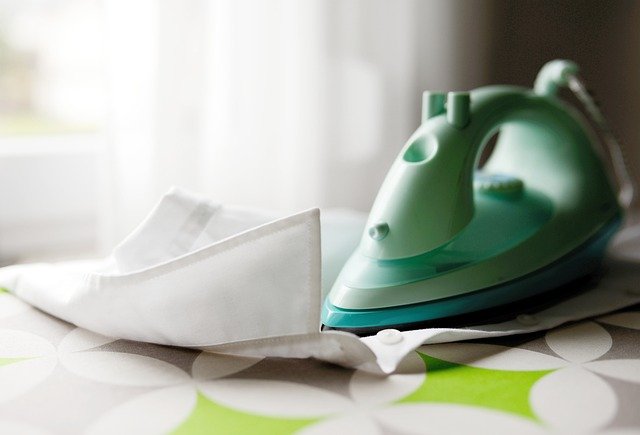Steam Iron: How It Smooths Clothes and Cares for Fabric
A steam iron combines heat and moisture to remove creases from clothes while helping preserve fabric structure. Designed for home and light professional use, these appliances use a water reservoir and a heated soleplate to deliver controlled steam. Understanding how they work and how to use them properly makes ironing faster and reduces the risk of damage to garments.

What is a steam iron?
A steam iron is an electric iron with a built-in water tank and vents in the soleplate that release steam when heated. The iron heats the soleplate to a set temperature and converts water into steam that penetrates fabric fibers. Many models include adjustable temperature settings, a steam burst button for stubborn folds, and features like anti-drip and self-clean to improve usability and longevity. The combination of heat and moisture relaxes fibers so they reshape under light pressure from the plate.
How does steam remove wrinkles?
Steam loosens the bonds in fabric fibers by introducing moisture and heat, allowing fibers to relax and return to their natural shape. When steam contacts a hot soleplate, tiny water droplets penetrate the cloth and evaporate, softening the material and reducing wrinkles. For best results, move the iron steadily along seams and flat surfaces, and use short steam bursts on persistent creases. Vertical steaming—holding the iron or a dedicated steamer upright near hanging garments—can also smooth wrinkles without direct contact, useful for drapes and suits.
Preparing clothes for ironing
Preparing clothes properly helps protect garments and improves results. Always check the care label for recommended temperature and steam settings, and sort items by fabric type so you can adjust the iron appropriately. Turn delicate or printed items inside out and remove any accessories or items from pockets. Slightly damp clothes often respond better to steam; use a spray bottle for very dry garments. Lay the item flat on the ironing board, smooth with your hands to remove large folds, and begin with lower-heat sections such as collars and cuffs.
Best settings for different fabric
Different fabric types require different heat and steam levels to avoid damage. Natural fibers like cotton and linen tolerate higher heat and more steam, which helps remove deep wrinkles. Wool benefits from medium heat and moderate steam, often with a pressing cloth to avoid shine. Silk and synthetic fabrics need low heat and minimal steam—often ironing inside out is safest. Always test a small hidden area when unsure. Many irons include labeled settings (e.g., synthetic, silk, wool, cotton, linen) and an indicator light that shows when the chosen temperature is reached.
Safety and care for your iron
Safe use and regular maintenance extend the life of an iron and protect clothes. Always place the iron upright on a stable surface when not in use and unplug it after ironing. Empty the water tank to prevent mineral buildup if the appliance will be stored for a while. Clean the soleplate according to manufacturer guidelines—avoiding abrasive cleaners that can scratch—and use descaling cycles or vinegar solutions where appropriate for hard-water areas. Check the cord for damage and never leave a hot iron unattended on fabric or the ironing board.
Conclusion
A steam iron is a practical tool for maintaining a neat wardrobe while being gentle on fabric when used correctly. Understanding basic components, how steam relaxes fibers, and the importance of preparing clothes and selecting appropriate settings will reduce wrinkles more effectively and reduce wear on garments. Regular safety checks, cleaning, and sensible storage further protect both the iron and your clothes, making routine garment care quicker and more reliable. With consistent technique—steady movements, correct temperatures, and attention to fabric labels—steam ironing becomes a straightforward step in garment maintenance that preserves shape and appearance over time.






